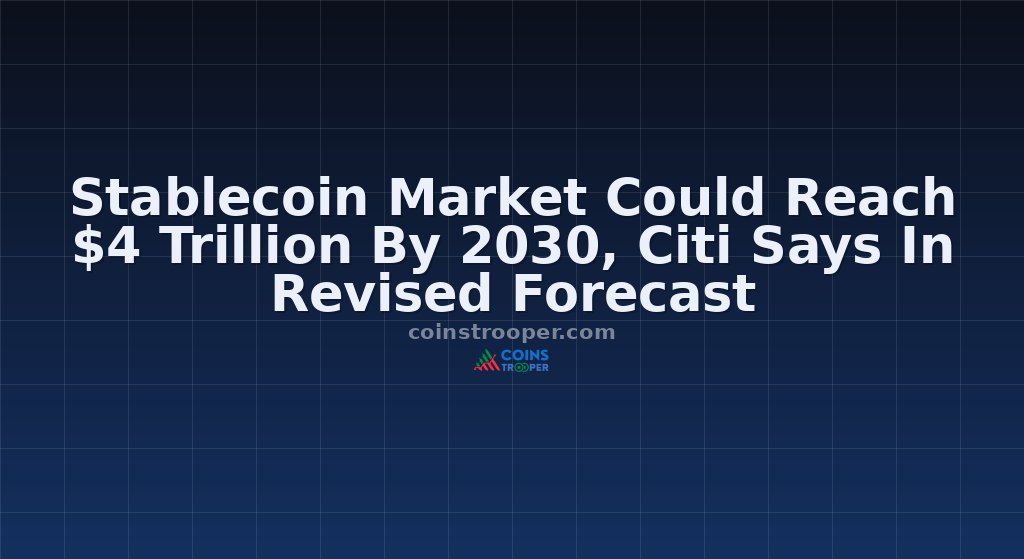Stablecoin Market Could Reach $4 Trillion By 2030, Citi Says In Revised Forecast

- Citi argued this growth reflects blockchain’s “ChatGPT moment” as digitally native companies lead adoption in real-world commerce.
- Yet the report suggests stablecoins may not dominate all on-chain finance.
- A small migration of traditional banking rails on-chain, Citi estimated, could push bank token turnover beyond $100 trillion by the end of the decade.
- The forecast also underscored the continued role of the U.S.
Market Context
The stablecoin market is expanding faster than expected, with issuance volumes rising from about $200 billion at the start of 2025 to $280 billion as of Thursday, according to a report by Citi.
Yet the report suggests stablecoins may not dominate all on-chain finance. Bank tokens — such as tokenized deposits — could ultimately see higher transaction volumes, driven by corporate demand for regulatory safeguards, real-time settlement and embedded compliance. A small migration of traditional banking rails on-chain, Citi estimated, could push bank token turnover beyond $100 trillion by the end of the decade.
Why It Matters
The bank has lifted its 2030 forecast for stablecoin issuance to $1.9 trillion in its base case and $4 trillion in a bull case, up from $1.6 trillion and $3.7 trillion respectively.
If stablecoins circulate at a velocity comparable to fiat currencies, they could support up to $100 trillion in annual transactions by 2030 under the base scenario and double that in the bull case. Citi argued this growth reflects blockchain’s “ChatGPT moment” as digitally native companies lead adoption in real-world commerce.
The forecast also underscored the continued role of the U.S. dollar. Most on-chain money remains dollar-denominated, fueling demand for Treasuries, though hubs like Hong Kong and the UAE are emerging as centers of experimentation.
Citi framed the rise of stablecoins not as a battle to replace banks but as part of a broader reimagining of financial infrastructure. Different forms of digital money — stablecoins, bank tokens and CBDCs — are likely to coexist, each finding its niche.

